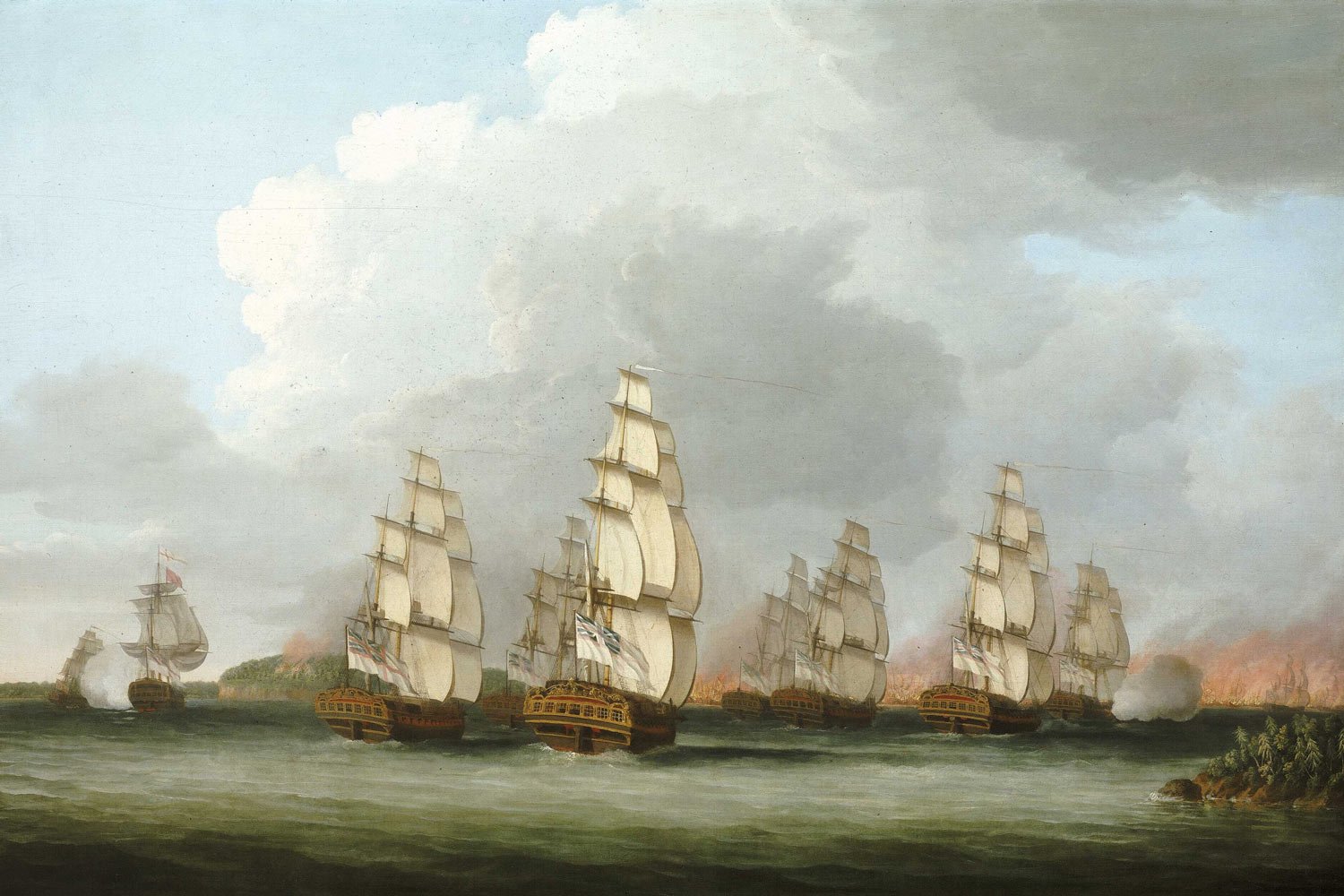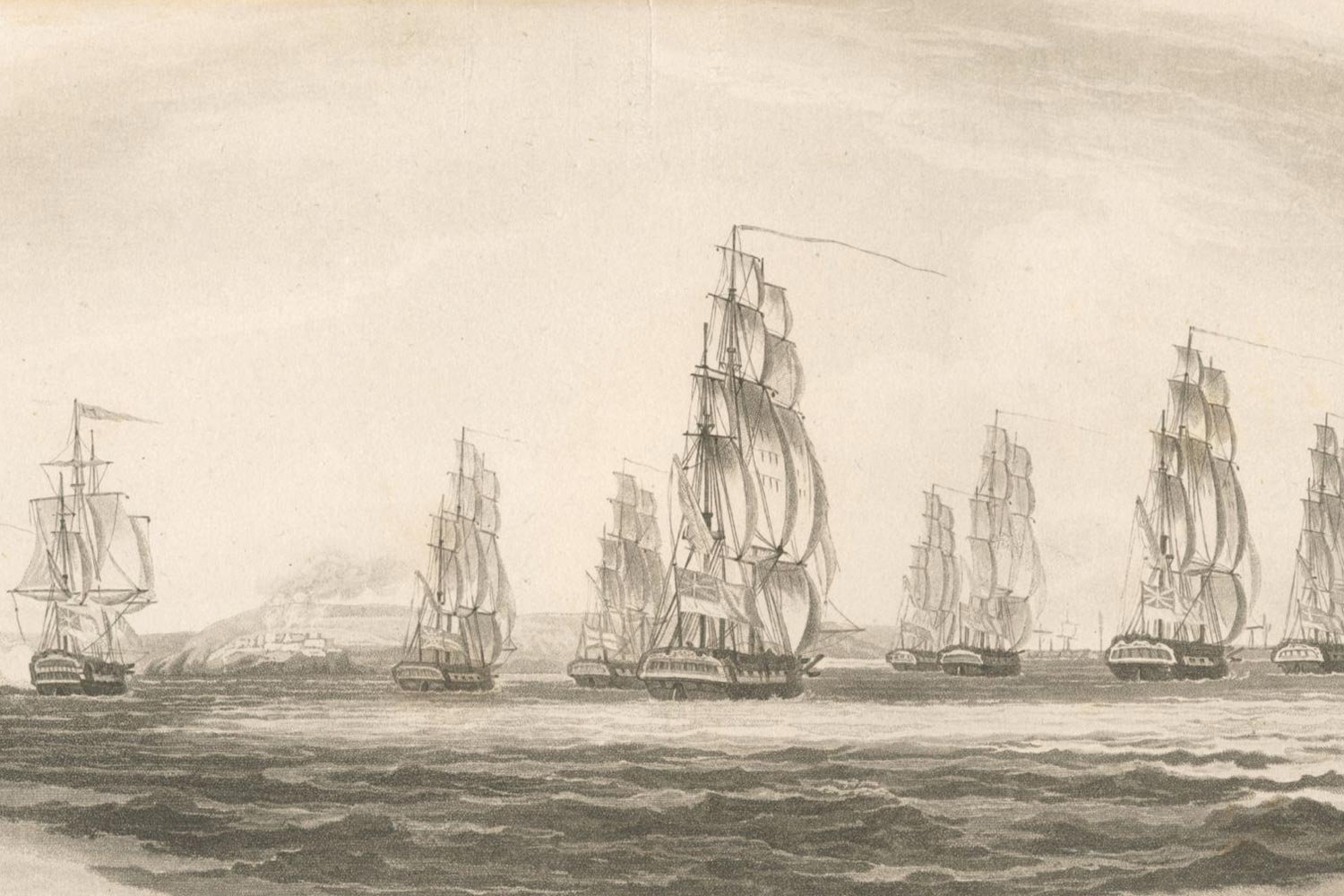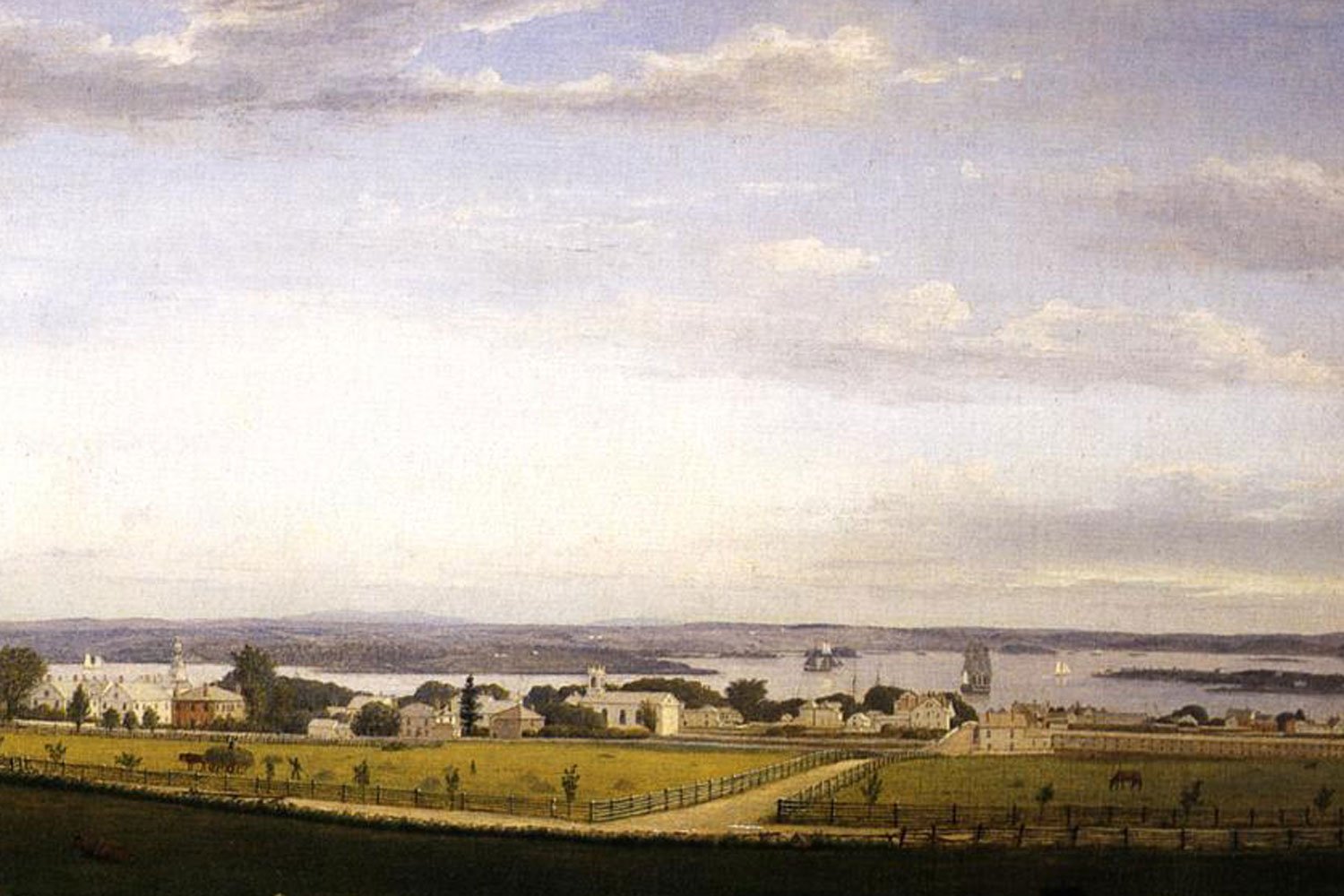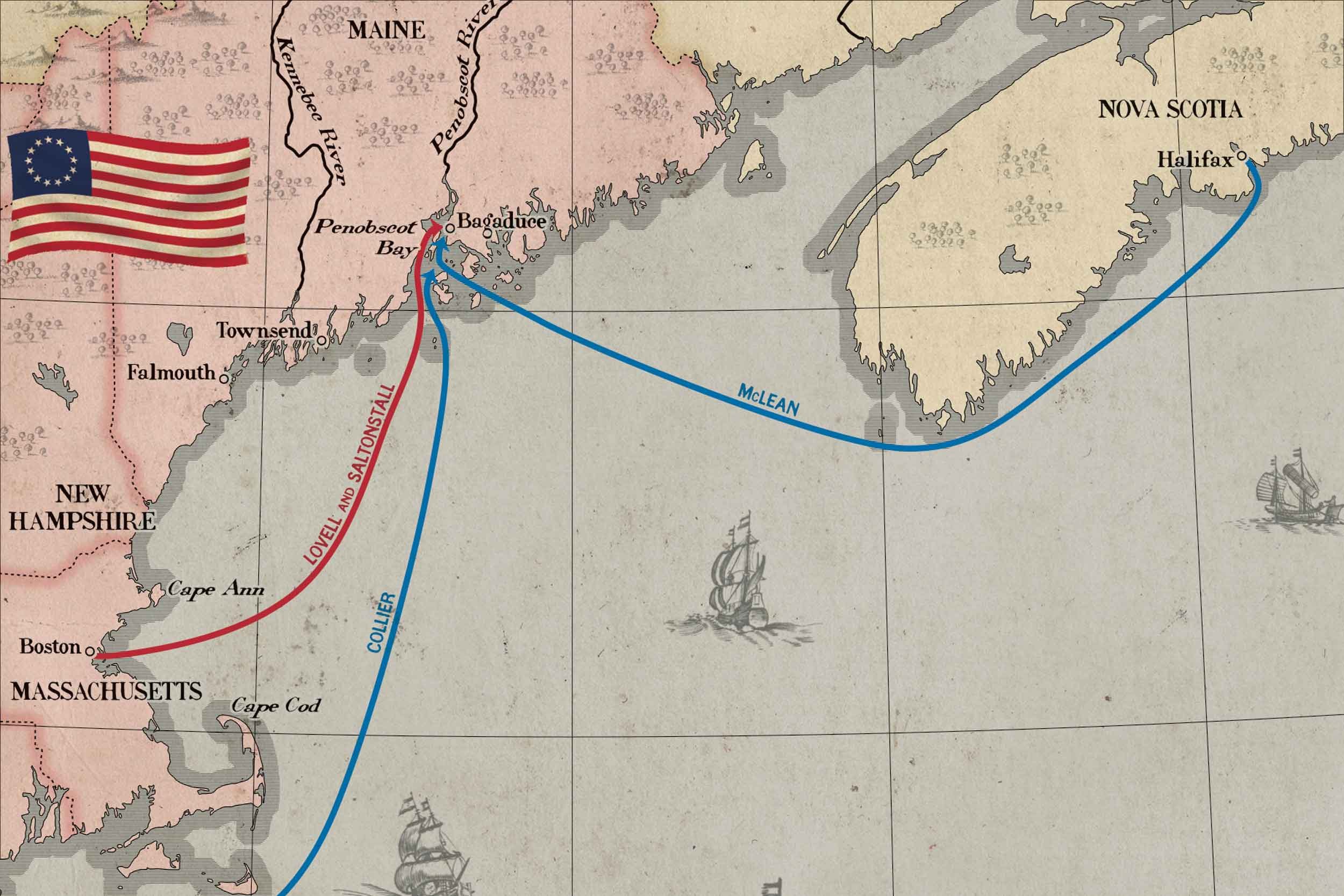Time Runs Out for Americans at Penobscot Bay
The Penobscot Expedition stalled soon after the fighting started due to a squabble between the army commander, General Solomon Lovell, and his naval counterpart, Commodore Dudley Saltonstall. Showing a reluctance to engage the enemy that bordered on cowardice, Saltonstall was an obstacle that Lovell could not overcome. Without the support of Saltonstall’s guns, Lovell refused to risk a frontal assault on Fort George. Meanwhile, unbeknownst to the Americans, they were now in a race against time as a British fleet under Sir George Collier was sailing north from New York to relieve the British garrison in Penobscot Bay.
Tom Hand, creator and publisher of Americana Corner, discusses how the reluctance to engage the enemy caused the Penobscot Expedition to run out of steam, and why it still matters today.
Images courtesy of Library of Congress, The New York Public Library, Alamy, U.S. Naval History, Wikipedia.





As morning broke on August 17, 1779, Vice-Admiral Sir George Collier, the commander of the small British flotilla inside Penobscot Bay, could hardly believe what had transpired over the past three days. Arriving with the expectation of a stiff fight from an American fleet much larger than his own, no battle ever materialized as the American commanders chose self-destruction to facing British guns.